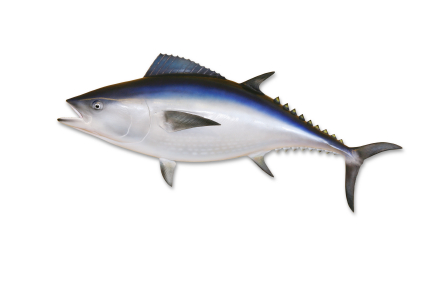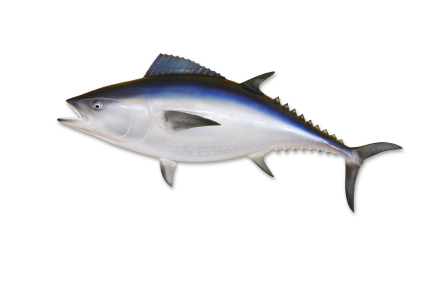 The mighty bluefin: Are rumors of its death at least slightly exaggerated? “Nations free to fish bluefin tuna to extinction,” thundered Tom Laskawy’s headline on Grist. On the Politics of the Plate blog, Barry Estabrook’s title was more concise: “Bye-bye bluefin.”
The mighty bluefin: Are rumors of its death at least slightly exaggerated? “Nations free to fish bluefin tuna to extinction,” thundered Tom Laskawy’s headline on Grist. On the Politics of the Plate blog, Barry Estabrook’s title was more concise: “Bye-bye bluefin.”
They were reacting to the decision by the Convention on International Trade in Endangered Species (CITES) not to ban trade in Atlantic bluefin tuna, a highly overfished species prized in Japan.
Slow down, everyone: don’t go into mourning for this iconic fish just yet.
Even if the CITES ban had been approved, we can’t be certain the situation was going to get better for bluefin. After all, there are some compelling arguments for why CITES may not have been the appropriate tool to fix this problem. Japan, which consumes 80 percent of bluefin tuna worldwide, had already made clear their intention to ignore the CITES ban if approved. And we already know there are many countries that fail to enforce current laws limiting bluefin harvest — why would they implement or enforce laws required by a voluntary trade agreement?
In a press release after the decision, the Pew Environment Group wrote that: “Today’s vote puts the fate of Atlantic bluefin tuna back in the hands of the International Commission for the Conservation of Atlantic Tunas (ICCAT), the very body that drove the species to the disastrous state it is now in.”
While I agree, I would add to it: Thursday’s vote puts the fate of Atlantic bluefin tuna back in the hands of ICCAT, the very body that drove the species to the disastrous state it is now in, but also the body that rebuilt North Atlantic swordfish to a sustainable level in less than 10 years, ahead of the rebuilding deadline. Also, remember: it is the consumer in the global market economy who has turned the bluefin into a prestige product — and thus given fisherman an overwhelming incentive to overfish it.
Let’s take a little walk down memory lane. In the late 1980s North Atlantic swordfish were subjected to unsustainable fishing pressure and the Atlantic stock was in decline. The U.S. government implemented a management plan in 1985 including minimum size limits; ICCAT followed suit in 1990. That wasn’t quite enough to reverse the decline, which continued until 1997.
During that same time period U.S. commercial swordfish fishermen and environmental groups pushed ICCAT to go further. In 1999 ICCAT finally established stricter regulations and a 10-year rebuilding plan. Yet, many environmental groups were fed up with ICCAT’s foot-dragging and the “Give Swordfish a Break” boycott was launched that same year. By 2002 the North Atlantic swordfish population had rebuilt to 94 percent of the target population size and was fully rebuilt just a few years later.
While the boycott effectively called attention to the consequences of over-harvest, it also had some negative secondary affects that have lasted to the present. Initially, the boycott pushed down demand from higher-paying customers, and the market price for swordfish dropped. Lower prices forced U.S. fishermen out of the market, leaving it in the hands of those who could afford to harvest swordfish at a lower price — generally fishermen in countries without conservation regulations, using far less sustainable fishing methods.
In U.S. territories, closures prevent fishing in waters with historically high levels of bycatch, satellite tracking systems are mandatory on longline vessels, the use of circle hooks is required to increase the post-release survival of bycatch, and fishermen must attend workshops where they learn how to properly handle and release these animals. Other countries do not have such regulations in place.
Many U.S. swordfish fishermen went out of business in the years following the boycott. Now the U.S. swordfish industry is only able to harvest 40-60 percent of the U.S. allocation from ICCAT. Meanwhile, other countries using less sustainable fishing methods are continually lobbying for reallocation of the unused U.S. quota. If that happens, far more sea turtles and billfish will die on foreign longlines in the Atlantic and Caribbean.
Of course there are a few very important differences between swordfish and bluefin tuna. Swordfish grow rapidly, reach maturity earlier, are short-lived and spawn in many areas of the ocean. That makes them fairly resilient to fishing pressure and able to rebuild quickly. Atlantic bluefin spawn only in the Gulf of Mexico and Mediterranean Sea, grow slower and have a long life span. The swordfish population was never as depleted as bluefin tuna are. At the swordfish population’s lowest level it was still around two-thirds of the target size. The eastern Atlantic bluefin tuna population is estimated to be around one-third of the target size. Finally, swordfish has a lower market price than bluefin tuna thus there was less of an incentive for illegal harvest, which may be one of bluefin’s biggest problems.
But we can also draw a parallel between the history of swordfish and the current state of Atlantic bluefin tuna. It took ICCAT quite a while to get its act together and implement a rebuilding plan for swordfish, but they finally did because of pressure from fishermen and environmental groups. It’s obviously taking ICCAT a while to get their act together to do something about bluefin tuna, but due to pressure from fishermen and environmental groups, they finally did during the ICCAT meeting last November.
A few of the results of that meeting:
-ICCAT reduced the 2010 total allowable catch to 13,500 metric tons (down from 22,000 metric tons in 2009 and 28,500 metric tons in 2008) and also committed to catch levels for 2011-2013 that have a 60 percent probability of rebuilding the stock to healthy levels within 13 years. They also agreed to reduce fishing capacity. The 2010 total allowable catch isn’t as low as some countries and environmental groups desired but it is finally within the statistical range recommended by scientists.
-ICCAT voted to reduce purse seiners’ fishing season to one month instead of two.
-ICCAT finally held countries accountable for violations through formal identifications, which are intended to help reduce illegal fishing, among other things.
-ICCAT adopted a U.S-sponsored framework for presentation of scientific advice that will aid precautionary management.
In addition, two years ago ICCAT increased the legal minimum size for landing bluefin to 30 kg, which means all fish harvested are sexually mature. Of course we have yet to see if these measures will be effective. ICCAT does not have a history of enforcement by its members, but it does suggest that ICCAT finally realizes they can’t ignore this problem anymore.
So, am I thrilled with what ICCAT did? No, but it’s a heck of lot better than what they’ve been doing.
When I advise chefs on selecting sustainable seafood, I often tell them “baby steps are ok.” It’s not easy, or even possible, to enact sweeping changes while running a restaurant. While bluefin needs a lot more than “baby steps,” ICCAT took a big step last November and has pledged to continue those big steps. Environmental groups and responsible fishermen should continue applying pressure to ICCAT, but I’m not ready to write off Atlantic bluefin just yet.
Megan Westmeyer has led the South Carolina Aquarium’s Sustainable Seafood Initiative since 2004, and serves on the Board of Overseers of the Boston-based Chefs Collaborative.



